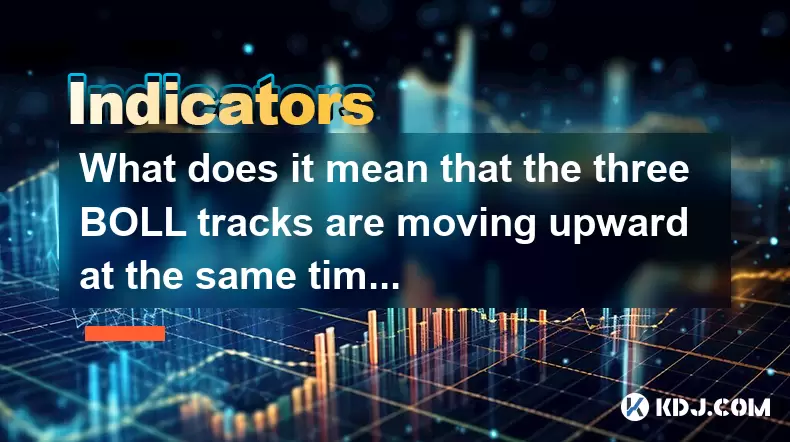-
 Bitcoin
Bitcoin $117600
0.25% -
 Ethereum
Ethereum $4424
0.10% -
 XRP
XRP $3.101
0.50% -
 Tether USDt
Tether USDt $1.001
-0.01% -
 BNB
BNB $836.2
1.26% -
 Solana
Solana $188.8
2.11% -
 USDC
USDC $1.000
0.01% -
 Dogecoin
Dogecoin $0.2301
0.57% -
 TRON
TRON $0.3485
-1.00% -
 Cardano
Cardano $0.9209
-1.34% -
 Hyperliquid
Hyperliquid $46.72
-1.19% -
 Chainlink
Chainlink $22.62
4.84% -
 Stellar
Stellar $0.4275
-0.38% -
 Sui
Sui $3.761
1.91% -
 Bitcoin Cash
Bitcoin Cash $586.7
-0.25% -
 Ethena USDe
Ethena USDe $1.001
0.01% -
 Hedera
Hedera $0.2510
2.06% -
 Avalanche
Avalanche $24.21
2.22% -
 Litecoin
Litecoin $119.7
1.07% -
 Toncoin
Toncoin $3.450
1.06% -
 UNUS SED LEO
UNUS SED LEO $9.411
-0.93% -
 Shiba Inu
Shiba Inu $0.00001298
1.20% -
 Uniswap
Uniswap $10.98
3.25% -
 Polkadot
Polkadot $3.961
2.16% -
 Dai
Dai $1.000
0.00% -
 Bitget Token
Bitget Token $4.642
0.95% -
 Cronos
Cronos $0.1514
0.57% -
 Ethena
Ethena $0.7290
3.78% -
 Monero
Monero $254.1
7.69% -
 Pepe
Pepe $0.00001102
2.47%
What does it mean that the three BOLL tracks are moving upward at the same time? Is it a strong bullish signal?
When all three Bollinger Bands move upward together in crypto trading, it's a strong bullish signal, but confirm with RSI or MACD to avoid false signals.
May 22, 2025 at 11:07 am

When discussing the movement of the Bollinger Bands (BOLL) in the context of cryptocurrency trading, understanding the implications of the three bands moving upward simultaneously is crucial. Bollinger Bands are a technical analysis tool developed by John Bollinger, which consist of a middle band being a simple moving average (SMA), and two outer bands that are standard deviations away from the middle band. In this article, we will explore what it means when all three BOLL tracks move upward at the same time and whether this can be considered a strong bullish signal in the crypto market.
Understanding Bollinger Bands
Bollinger Bands are composed of three lines: the middle band, which is typically a 20-day simple moving average (SMA); the upper band, which is the middle band plus two standard deviations; and the lower band, which is the middle band minus two standard deviations. These bands expand and contract based on the volatility of the market. When the bands are close together, it indicates low volatility, and when they are far apart, it signifies high volatility.
The Significance of All Three Bands Moving Upward
When all three Bollinger Bands move upward simultaneously, it suggests that the market is experiencing an uptrend. The middle band, being the SMA, moving upward indicates that the average price of the cryptocurrency over the selected period is increasing. The upper and lower bands moving upward alongside the middle band further reinforces this trend, showing that the price is not only increasing but doing so with consistent volatility.
Is This a Strong Bullish Signal?
The movement of all three Bollinger Bands upward can indeed be considered a strong bullish signal. This is because it indicates a sustained upward momentum in the price of the cryptocurrency. Traders often look for such signals to confirm that the market is in a strong uptrend, which could be a good time to enter or add to long positions.
However, it is important to consider other factors and indicators alongside Bollinger Bands. While the upward movement of the bands can signal a strong bullish trend, it should not be the sole basis for making trading decisions. Other technical indicators, such as the Relative Strength Index (RSI) or Moving Average Convergence Divergence (MACD), can provide additional confirmation of the trend's strength and sustainability.
Practical Application in Cryptocurrency Trading
To apply the knowledge of Bollinger Bands moving upward in cryptocurrency trading, follow these steps:
- Select a Cryptocurrency: Choose the cryptocurrency you want to analyze. This could be Bitcoin, Ethereum, or any other token you are interested in.
- Access a Trading Platform: Use a trading platform or charting tool that supports Bollinger Bands, such as TradingView or Binance.
- Set Up Bollinger Bands: On the chart, add the Bollinger Bands indicator. Ensure the settings are standard, typically a 20-day SMA with two standard deviations for the upper and lower bands.
- Monitor the Bands: Observe the movement of the bands over time. Look for instances where all three bands are moving upward together.
- Confirm with Other Indicators: Use additional technical indicators to confirm the bullish trend. For example, check if the RSI is above 50 or if the MACD line is above the signal line.
- Make Trading Decisions: Based on the confirmed bullish signal, decide whether to enter a long position or add to existing positions.
Potential Pitfalls and Considerations
While the upward movement of all three Bollinger Bands can be a strong bullish signal, there are potential pitfalls to consider. One key consideration is the possibility of a false signal. Sometimes, the bands may move upward briefly due to temporary market conditions, only to reverse shortly afterward. To mitigate this risk, always use multiple indicators and consider the broader market context.
Another factor to keep in mind is overbought conditions. Even if the bands are moving upward, if the price is significantly above the upper band, it might indicate that the cryptocurrency is overbought and due for a correction. In such cases, the bullish signal might be less reliable.
Real-World Examples
To illustrate the concept, let's look at a real-world example. Suppose you are analyzing the price chart of Bitcoin and notice that over the past month, all three Bollinger Bands have been moving steadily upward. The middle band, representing the 20-day SMA, is consistently rising, and both the upper and lower bands are following suit. This scenario would suggest a strong bullish trend in Bitcoin's price.
In another example, consider Ethereum. If you observe that the Bollinger Bands for Ethereum are moving upward together, and this movement is corroborated by a rising MACD and an RSI above 60, it would reinforce the bullish signal, making it a potentially good time to buy or hold Ethereum.
Frequently Asked Questions
Q: Can Bollinger Bands be used for short-term trading in cryptocurrencies?
A: Yes, Bollinger Bands can be used for short-term trading in cryptocurrencies. Traders often use shorter time frames, such as hourly or 4-hour charts, to identify short-term trends and potential entry and exit points. However, the effectiveness of Bollinger Bands in short-term trading depends on the overall market conditions and the volatility of the specific cryptocurrency being traded.
Q: How do Bollinger Bands differ from other volatility indicators like the Average True Range (ATR)?
A: Bollinger Bands and the Average True Range (ATR) both measure volatility, but they do so in different ways. Bollinger Bands use standard deviations to create dynamic bands around a moving average, providing a visual representation of volatility and price levels. In contrast, ATR calculates the average range of price movement over a specified period, giving a numerical value of volatility. While Bollinger Bands can indicate overbought or oversold conditions, ATR focuses solely on the magnitude of price movements.
Q: Are there specific cryptocurrencies where Bollinger Bands are more effective?
A: The effectiveness of Bollinger Bands does not depend on the specific cryptocurrency but rather on the market conditions and the volatility of the asset. Generally, cryptocurrencies with higher liquidity and trading volumes, such as Bitcoin and Ethereum, tend to provide more reliable signals due to their active trading environments. However, Bollinger Bands can be applied to any cryptocurrency, and their effectiveness will vary based on the asset's volatility and market dynamics.
Q: How often should I check the Bollinger Bands for trading signals?
A: The frequency of checking Bollinger Bands depends on your trading strategy. For long-term investors, checking the bands on a daily or weekly basis may be sufficient. For short-term traders, monitoring the bands on an hourly or 4-hour basis could be more appropriate. It's important to balance the need for timely information with the risk of overtrading based on short-term fluctuations.
Disclaimer:info@kdj.com
The information provided is not trading advice. kdj.com does not assume any responsibility for any investments made based on the information provided in this article. Cryptocurrencies are highly volatile and it is highly recommended that you invest with caution after thorough research!
If you believe that the content used on this website infringes your copyright, please contact us immediately (info@kdj.com) and we will delete it promptly.
- Kazakhstan's Crypto Leap: Bitcoin ETF and Central Asia's Digital Finance Future
- 2025-08-13 12:45:19
- BlockDAG Presale Blazes Past $371M: Fundraising Frenzy Fuels Crypto Sensation
- 2025-08-13 13:05:21
- Meme Coins: Chasing the 2025 Surge – Which Will Moonshot?
- 2025-08-13 10:25:23
- Bitcoin's Wild Ride: Rally, Pullback, and What's Next
- 2025-08-13 10:25:23
- Bitcoin, Bitmax, and Institutional Demand: A New Era of Crypto Investment
- 2025-08-13 10:45:12
- Solana, ROAM, and Airdrops: What's the Buzz in 2025?
- 2025-08-13 11:35:13
Related knowledge

What does it mean when the +DI and -DI cross frequently in the DMI indicator but the ADX is flattening?
Aug 11,2025 at 03:15am
Understanding the DMI Indicator ComponentsThe Directional Movement Index (DMI) is a technical analysis tool composed of three lines: the +DI (Positive...

What does the sudden appearance of a "dark cloud cover" candlestick pattern during an uptrend indicate?
Aug 13,2025 at 11:35am
Understanding the 'Dark Cloud Cover' Candlestick PatternThe dark cloud cover is a bearish reversal pattern in technical analysis that typically appear...

What does it mean when the moving average, MACD, and RSI all send buy signals simultaneously?
Aug 11,2025 at 01:42pm
Understanding the Convergence of Technical IndicatorsWhen the moving average, MACD, and RSI all generate buy signals at the same time, traders interpr...

What does it mean when both the KDJ indicator and the RSI show overbought signals simultaneously?
Aug 13,2025 at 11:35am
Understanding the KDJ Indicator in Cryptocurrency TradingThe KDJ indicator is a momentum oscillator derived from the Stochastic Oscillator, widely use...

What does it mean when the price is trading above the SAR indicator but the red dots are densely packed?
Aug 09,2025 at 11:49pm
Understanding the SAR Indicator and Its Visual SignalsThe SAR (Parabolic Stop and Reverse) indicator is a technical analysis tool used primarily to de...

What does it mean when the candlestick chart forms a "Morning Star" but trading volume is sluggish?
Aug 12,2025 at 06:28pm
Understanding the Morning Star Candlestick PatternThe Morning Star is a three-candle bullish reversal pattern commonly observed in cryptocurrency pric...

What does it mean when the +DI and -DI cross frequently in the DMI indicator but the ADX is flattening?
Aug 11,2025 at 03:15am
Understanding the DMI Indicator ComponentsThe Directional Movement Index (DMI) is a technical analysis tool composed of three lines: the +DI (Positive...

What does the sudden appearance of a "dark cloud cover" candlestick pattern during an uptrend indicate?
Aug 13,2025 at 11:35am
Understanding the 'Dark Cloud Cover' Candlestick PatternThe dark cloud cover is a bearish reversal pattern in technical analysis that typically appear...

What does it mean when the moving average, MACD, and RSI all send buy signals simultaneously?
Aug 11,2025 at 01:42pm
Understanding the Convergence of Technical IndicatorsWhen the moving average, MACD, and RSI all generate buy signals at the same time, traders interpr...

What does it mean when both the KDJ indicator and the RSI show overbought signals simultaneously?
Aug 13,2025 at 11:35am
Understanding the KDJ Indicator in Cryptocurrency TradingThe KDJ indicator is a momentum oscillator derived from the Stochastic Oscillator, widely use...

What does it mean when the price is trading above the SAR indicator but the red dots are densely packed?
Aug 09,2025 at 11:49pm
Understanding the SAR Indicator and Its Visual SignalsThe SAR (Parabolic Stop and Reverse) indicator is a technical analysis tool used primarily to de...

What does it mean when the candlestick chart forms a "Morning Star" but trading volume is sluggish?
Aug 12,2025 at 06:28pm
Understanding the Morning Star Candlestick PatternThe Morning Star is a three-candle bullish reversal pattern commonly observed in cryptocurrency pric...
See all articles

























































































